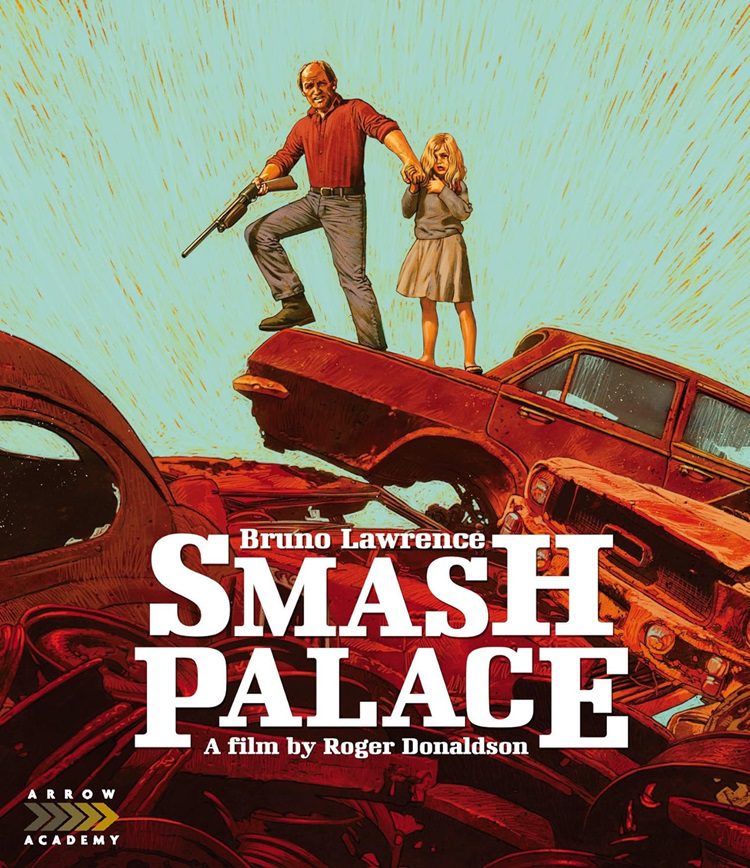
Sometimes films about divorce and parental miscommunication are difficult to swallow, especially because of how terrible they can be for the children involved. There are American films like Kramer vs. Kramer, Shoot the Moon, and Hope Floats, which are good but a little sugary. However, director Roger Donaldson’s stark 1981 classic, Smash Palace, defies convention and cliche with harsh truth and blunt authenticity that typically goes unnoticed in modern film. It also shows how the location (in this case, New Zealand) can bring out certain facets to a film’s plot.
Based on a newspaper article, the film centers on the crumbling marriage of former racing driver Al (Bruno Lawrence) and his French-born wife Jacqui (Anna Jemison). They first met when she nursed him back to health after an injury that ended his once-promising career. Afterwards, they married and returned to his native land to take over his late father’s wrecking-yard business, the Smash Palace, and had a daughter named Georgie (Greer Robson). But after several years, Jacqui becomes increasingly bored and fed-up with Al’s car obsession and reckless abandonment of family life with her and Georgie, which causes her to seek comfort and love from Ray (Keith Aberdein), who happens to be his best friend. Unfortunately, this leads to very serious consequences for all involved, especially for Georgie, who Al eventually kidnaps and takes to the wildnerness after Jacqui issues a non-molestation order against him. At this point, Al has lost his mind and he basically reaches the boiling point of no return.
What makes Smash Palace a true standout amongst its kind is the raw and almost grotesque attention to the emotional and physical breakdown of the character of Al. Yes, he is a brute, and a very toxic one, but in the hands of a lesser actor, Al could have turned into a complete and utter bastard. However, Lawrence’s portrayal should go down in film history as one of the most haunting performances that you will ever see. His Al is a broken man, but you understand the reason why. You hate him but yet you love him because he can’t be anything but himself. There is also brilliant support from Jemison, Aberdein, and especially Robson (whose scenes with Lawrence represent realistic father-and-daughter chemistry). She may be a child actor, but she doesn’t overdo the precociousness that others her age fail to keep at bay. She definitely holds her own against the more experienced, and adult actors.
The special features of the Arrow release include commentary by Donaldson and stunt driver Steve Millen; The Making of Smash Palace, a 51-minute documentary featuring interviews with Donaldson, Aberdein, filmmaker Geoff Murphy (who directed Lawrence in The Quiet Earth) and others. There is also a theatrical trailer and a booklet with reversible cover art and essays by Ian Barr and the late Pauline Kael.
I was very struck by the unglamorous view of humanity under constant turmoil and the characters of unexpected depth and complexity. You’ll be more than hard-pressed to find a film more compelling and shocking than this discovery of a film. It doesn’t conclude everything in a neat little bow, and that’s a good thing because life is just as messy. You’ll also see why Lawrence remained one of the finest actors to ever come out of New Zealand. I definitely give it my own seal of approval.